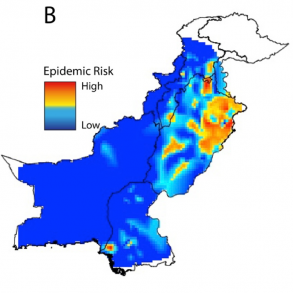Big Data for social good

“Big Data” seems to be one of the new catch phrases, often seen in conjunction with digital and artificial intelligence. But what is the hype, what is Big Data really and what does it mean to a mobile operator?
First of all: What is Big Data?
Wherever we go, whatever we do, we leave traces; a virtual breadcrumb trail. In fact, we leave enormous volumes of traces. This is what we call Big Data. The data can be structured or unstructured, but what is usually meant when we use the term “Big Data” today concerns the analysis and use of this data.
Keeping an eye on the mosquito
 One example of how Big Data can be used for good is in quantifying and analysing human mobility patterns, using this information to better understand how diseases such as dengue spread. The disease is mosquito-borne, but it also spreads as humans travel. It is important to know and understand the travel patterns in a country to predict the location and timing of virus introductions and improve preparedness in that region.
One example of how Big Data can be used for good is in quantifying and analysing human mobility patterns, using this information to better understand how diseases such as dengue spread. The disease is mosquito-borne, but it also spreads as humans travel. It is important to know and understand the travel patterns in a country to predict the location and timing of virus introductions and improve preparedness in that region.
In one study from Pakistan, Telenor Group worked with Harvard and other academic partners in utilising anonymised mobile call data of more than 30 million mobile subscribers during the 2013 dengue outbreak to map the spread and timing of the epidemic. The output was illustrated with risk maps showing the epidemic risk. These risk maps enable the Pakistani authorities to better predict the outbreak of dengue and other diseases spread by human mobility.
For the complete research article, “Impact of human mobility on the emergence of dengue epidemics in Pakistan”, take a look at PNAS’ website.
Studying the effects of extreme weather events
A second example of Big Data from mobile use being put to good work comes from Bangladesh. As a country that experiences extreme weather events such as cyclones, swathes of Bangladesh’s population are often forced to migrate from affected areas. In one study where Telenor Group worked with Flowminder, ICCCD and UN University, datasets from approximately 6 million customers were analysed to gain an impression of how this migration occurs during and after extreme weather events. This Big Data research has the potential to supplement the standard survey-based research, which struggles to quantify this connection.

Mapping the spread of malaria
Within the world of epidemiology, Telenor’s researchers found a new challenge in the study of the spread of multiple-drug-resistant (MDR) malaria. This type of malaria is particularly dangerous, as it poses a threat to the global efforts to control and eliminate the disease. Due to travel, MDR malaria has recently spread from Cambodia to several Asian countries, some of which Telenor is operating in (Thailand and Myanmar). With Bangladesh representing the key boundary between Southeast Asia and the rest of the world, Telenor will, together with key partners such as Harvard TH Chan School of Public Health and Mahidol Oxford Research Unit (MORU), use human mobility data to understand the spread in Thailand, Myanmar and Bangladesh.
The aim of the study is to model population movements that spread drug-resistant forms of malaria. In addition to working with established partners, the research team will work directly with local malaria control programmes, international universities and organisations, with the ultimate goal of containing this emerging threat to health in the region. With the knowledge of how and where the drug resistance spreads, the local programmes can more effectively target campaigns to contain resistance.
The mobile industry’s role and possibilities within Big Data for Social Good
Many private sector players gather and own data that, in cooperation with governmental bodies, NGOs or others, can be used to predict the spread of epidemics and diseases, natural disasters or environmental pollution. To read more about how telecommunications companies are working with Big Data, you should check out GSMA’s website.